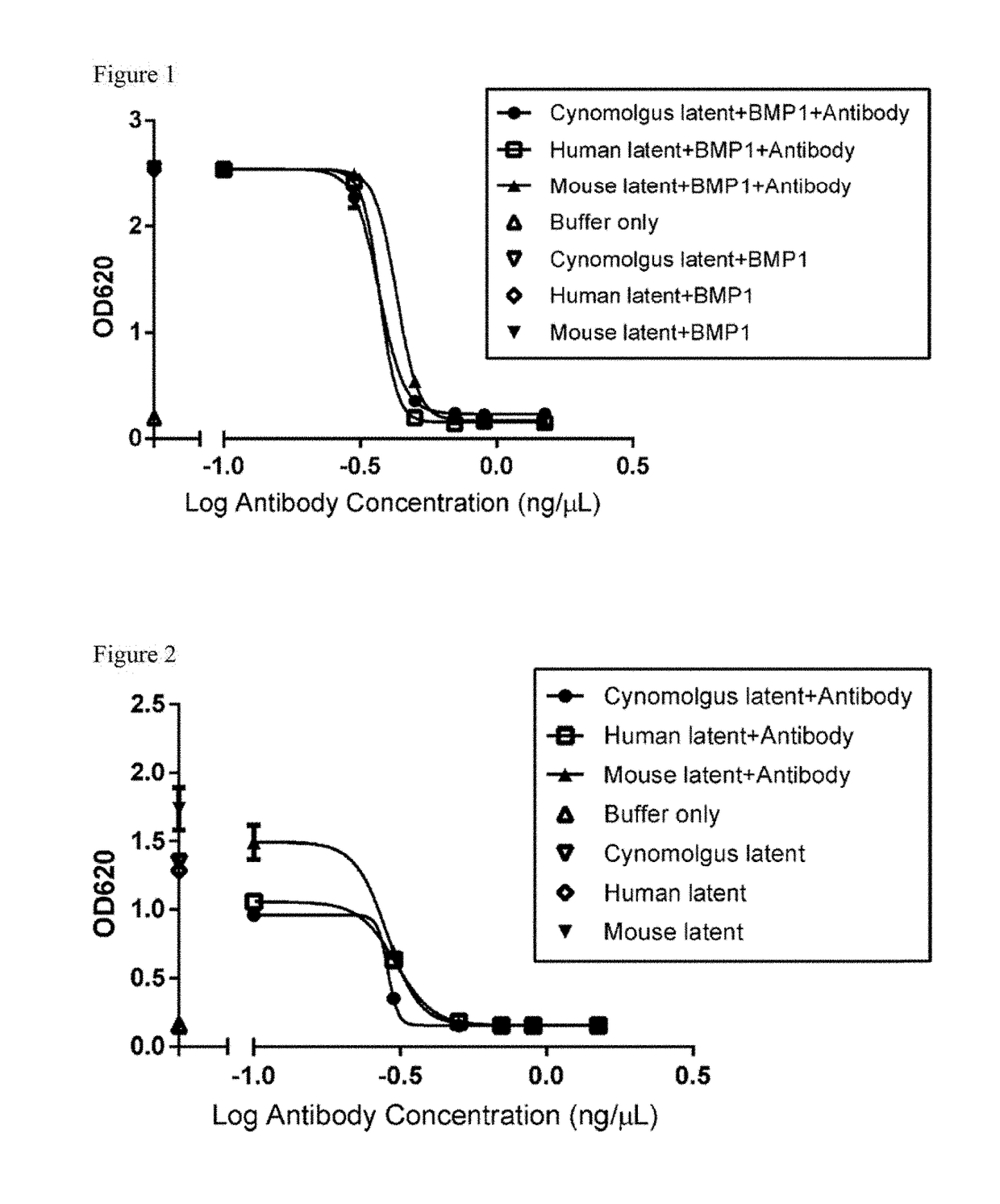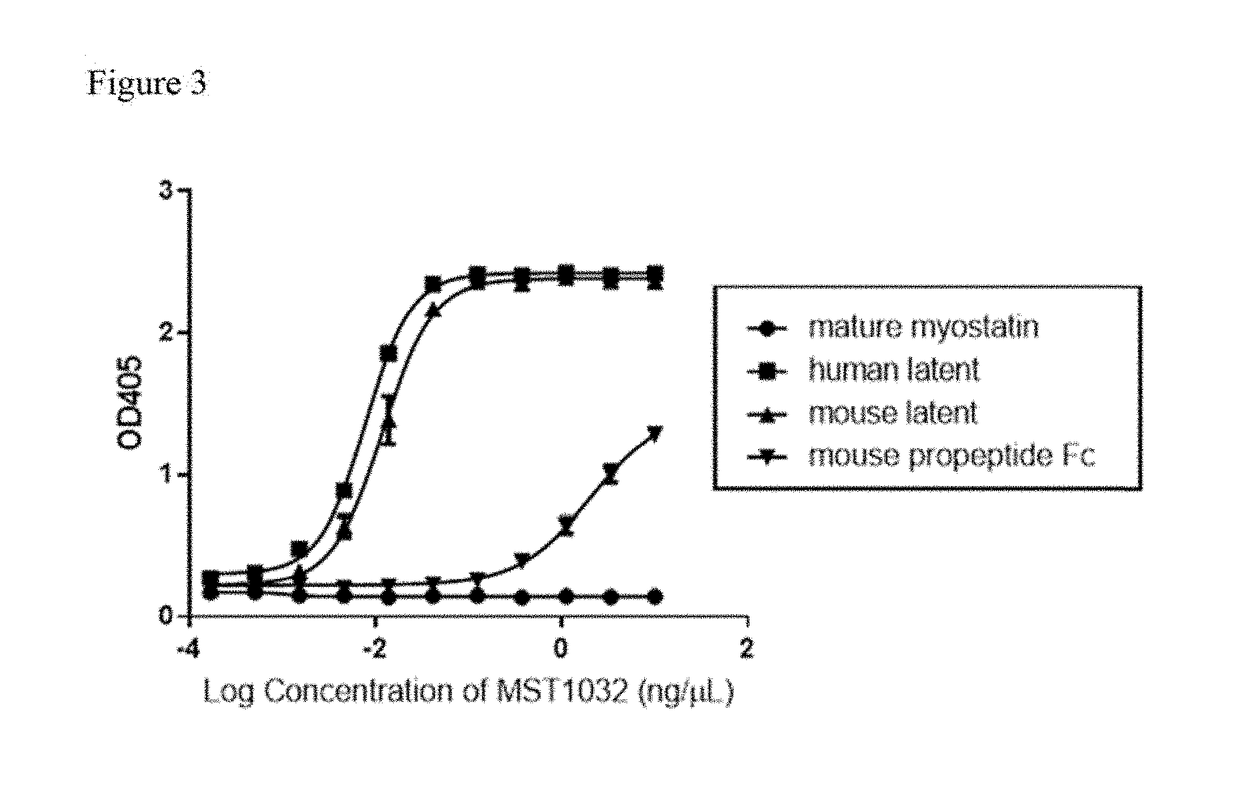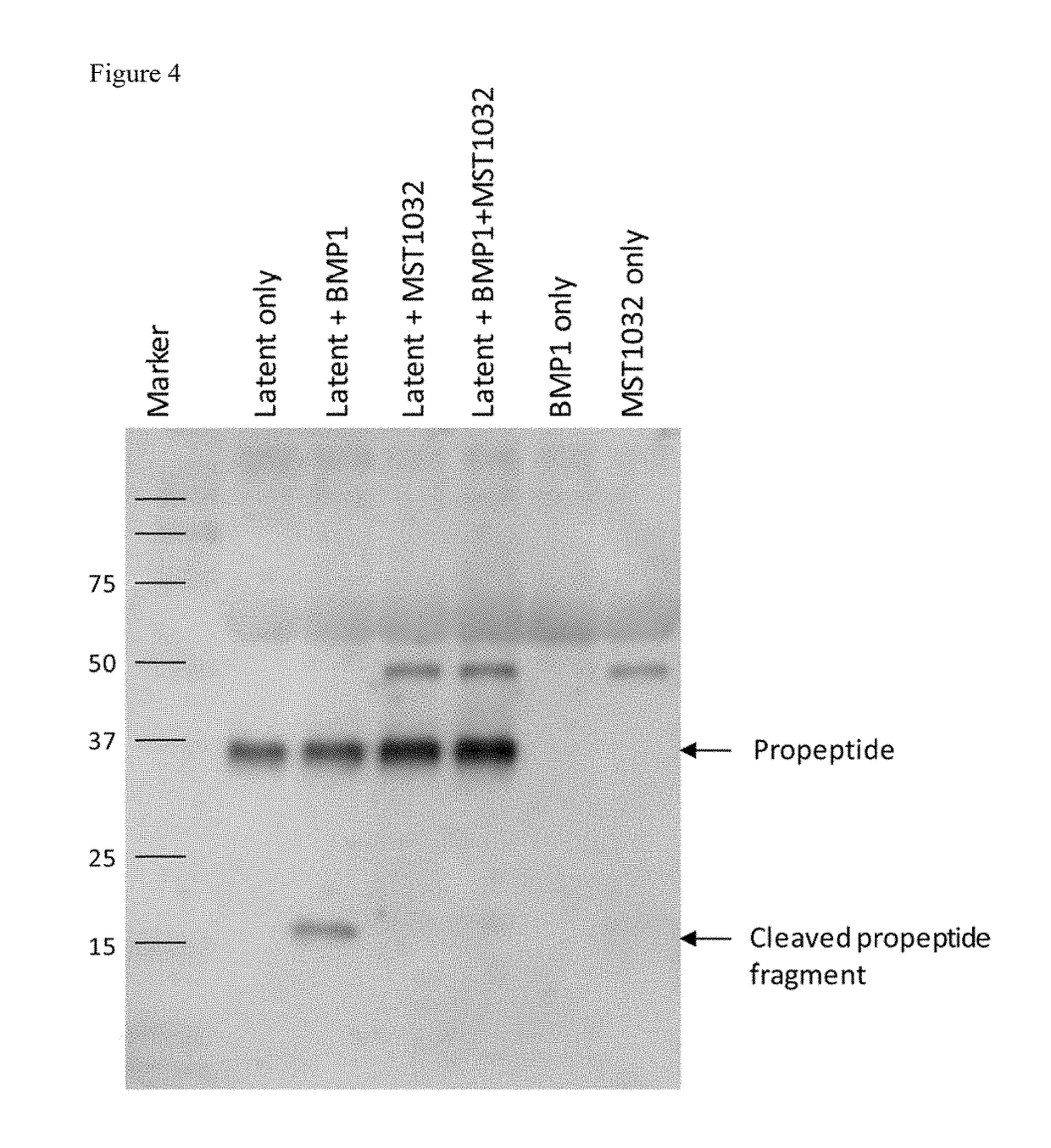Anti-myostatin antibodies, polypeptides containing variant fc regions, and methods of use
- Summary
- Abstract
- Description
- Claims
- Application Information
AI Technical Summary
Benefits of technology
Problems solved by technology
Method used
Image
Examples
example 1
Expression and Purification of Human, Cynomolgus Monkey, and Mouse Myostatin Latent and Mature Form
[0584]Human latent myostatin (also described herein as human myostatin latent form) (SEQ ID NO: 1) was expressed transiently using FREESTYLE®293 cells (FS293-F cells) (Thermo Fisher, Carlsbad, Calif., USA). Conditioned media containing expressed human myostatin latent form was acidified to pH6.8 and diluted with ½ vol of milliQ water, followed by application to a Q-sepharose FF anion exchange column (GE healthcare, Uppsala, Sweden). The flow-through fraction was adjusted to pH5.0 and applied to a SP-sepharose HP cation exchange column (GE healthcare, Uppsala, Sweden), and then eluted with a NaCl gradient. Fractions containing the human myostatin latent form were collected and subsequently subjected to a SUPERDEX® 200 gel filtration column (GE healthcare, Uppsala, Sweden) equilibrated with 1×PBS. Fractions containing the human myostatin latent form were then pooled and stored at −80° C....
example 2
Identification of Anti-Latent Myostatin Antibody
[0587]Anti-latent myostatin antibodies were prepared, selected, and assayed as follows.
[0588]Twelve to sixteen week old NZW rabbits were immunized intradermally with mouse latent myostatin and / or human latent myostatin (50-100 μg / dose / rabbit). This dose was repeated 3-4 times over a one month period. One week after the final immunization, the spleen and blood from the immunized rabbit were collected. Antigen-specific B-cells were stained with labelled antigen, sorted with FCM cell sorter (FACS aria III, BD), and plated in 96-well plates at a one cell / well density together with 25,000 cells / well of EL4 cells (European Collection of Cell Cultures) and with rabbit T-cell conditioned medium diluted 20 times, and were cultured for 7-12 days. EL4 cells were treated with mitomycin C (Sigma) for 2 hours and washed 3 times in advance. The rabbit T-cell conditioned medium was prepared by culturing rabbit thymocytes in RPMI-1640 containing Phytoh...
example 3
Characterization of Anti-Latent Myostatin Antibody (HEK Blue Assay (BMP1 Activation))
[0592]A reporter gene assay was used to assess the biological activity of active myostatin in vitro. HEK-Blue™ TGF-β cells (Invivogen) which express a Smad3 / 4-binding elements (SBE)-inducible SEAP reporter genes, allow the detection of bioactive myostatin by monitoring the activation of the activin type 1 and type 2 receptors. Active myostatin stimulates the production of SEAP which is secreted into the cell supernatant. The quantity of SEAP secreted is then assessed using QUANTIBlue™ (Invivogen).
[0593]HEK-Blue™ TGF-β cells were maintained in DMEM medium (Gibco) supplemented with 10% fetal bovine serum, 50 μg / mL streptomycin, 50 U / mL penicillin, 100 μg / mL Normocin™, 30 μg / mL of Blasticidin, 200 μg / mL of HygroGold™ and 100 μg / mL of Zeocin™. During the functional assay, cells were changed to assay medium (DMEM with 0.1% bovine serum albumin, streptomycin, penicillin and Normocin™) and seeded to a 96-w...
PUM
| Property | Measurement | Unit |
|---|---|---|
| Volume | aaaaa | aaaaa |
| Volume | aaaaa | aaaaa |
| Mass | aaaaa | aaaaa |
Abstract
Description
Claims
Application Information
 Login to View More
Login to View More - R&D
- Intellectual Property
- Life Sciences
- Materials
- Tech Scout
- Unparalleled Data Quality
- Higher Quality Content
- 60% Fewer Hallucinations
Browse by: Latest US Patents, China's latest patents, Technical Efficacy Thesaurus, Application Domain, Technology Topic, Popular Technical Reports.
© 2025 PatSnap. All rights reserved.Legal|Privacy policy|Modern Slavery Act Transparency Statement|Sitemap|About US| Contact US: help@patsnap.com



